More of the Chiricahua Mountain Birds
There is such a variety of bird species to see there
Here is an assortment of birds seen on my trip to the Chiricahuas. A male House Finch came into a yard for seeds but stopped on a dry agave stalk first.
A Lesser Goldfinch stopped on an ocotillo stalk where flowers were just about ready to bloom.
There were quite a few Black-headed Grosbeaks to be seen. This season there are many reports in southern Arizona of a larger than normal number of Black-headed Grosbeaks being seen at lower elevations. This irruption (a dramatic increase in numbers) may be caused by the lack of winter rain which may have limited the amount of food sources on the mountains and canyons that the Grosbeaks usually frequent.
Black-headed Grosbeaks are songbirds with thick bills, large heads and short necks. This gives them a chunky look. Their wings are black and white. Grosbeaks' bills are thick, conical and gray.
This Black-headed Grosbeak below looks like he's about to topple over. He was eager for a turn at the feeder and waited for a few other birds to finish before hopping in.
There were Scott's Orioles around. The contrast of the black and yellow feathers is striking.
Below is a young male Scott's Oriole. Its dark head lets us know it is not a female. These Orioles take two years to reach adult plumage. The thought is that by not having the full adult plumage at year 'one', the birds are not a threat to adult males and the adults will not harass the younger birds or try to chase them out of their territory.
Yellow-rumped Warblers were around. On this male, you can see the yellow on its crown, throat, and flanks. Only the yellow rump remains hidden from view.
Finally, one of the hardest birds to ignore in southern Arizona mountains- the Acorn Woodpecker. These loud and gregarious woodpeckers make their presence known with their raucous calls.
In many woodpeckers in the US, it is the males of the species that has red on its head. For Acorn Woodpeckers, both the males and females have red on their heads. The red on the males touches the white forehead. Female Acorn Woodpeckers have black feathers between the red and the white on their heads. The Acorn Woodpecker in these photos is clearly a male.
Birdnote has a story on Acorn Woodpeckers that you just have to listen to. In this piece, you can hear the distinctive call of these woodpeckers, but it is interesting to learn about how one busy Acorn Woodpecker inspired someone to create an American classic!!


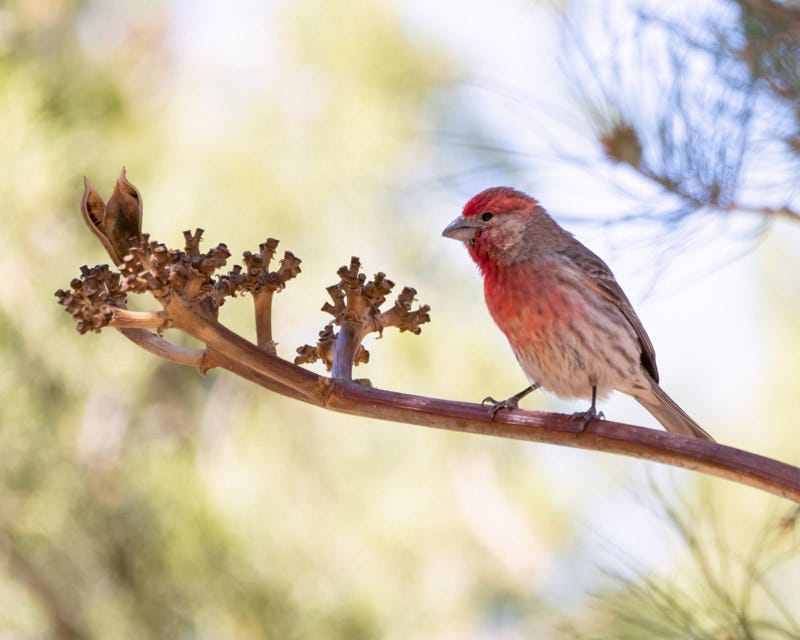
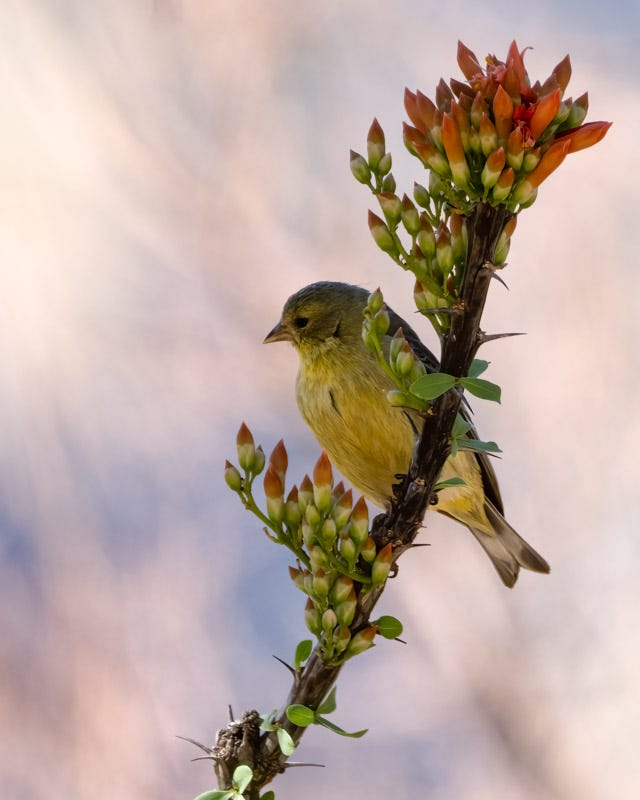
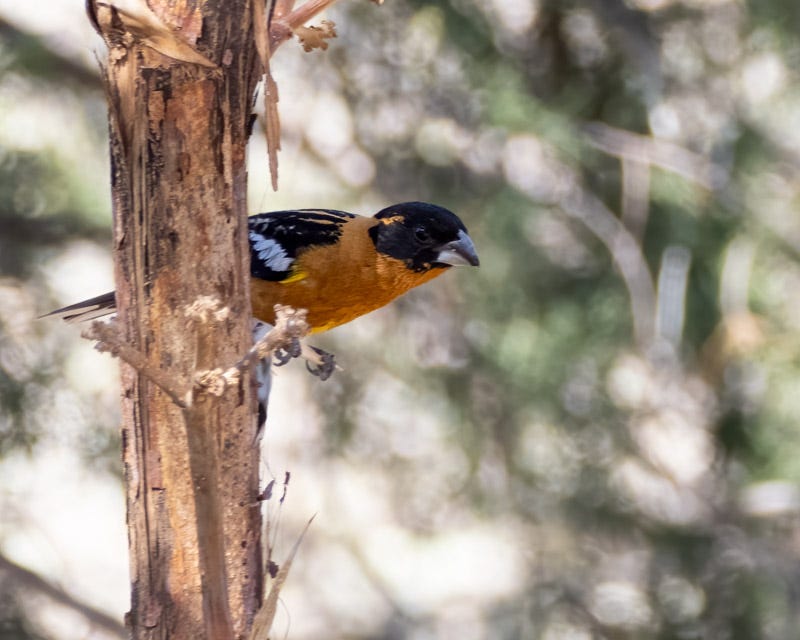
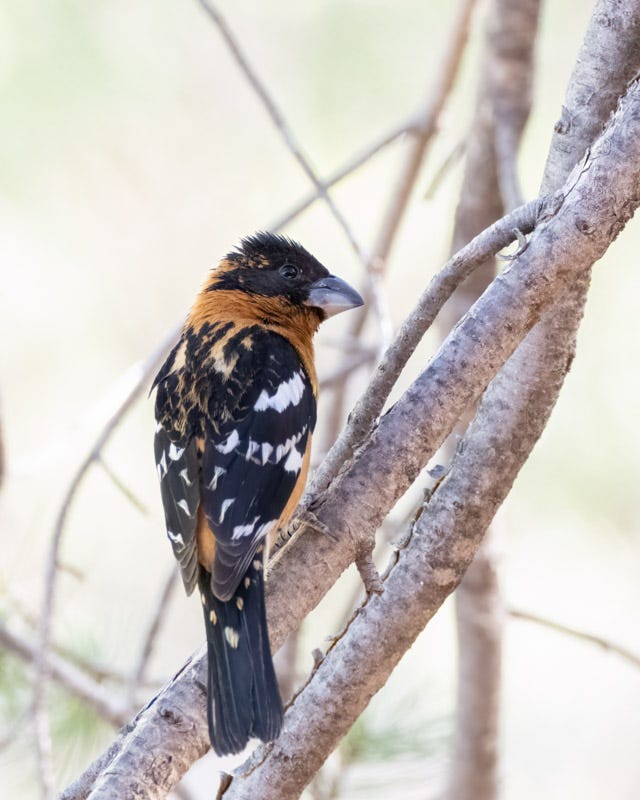

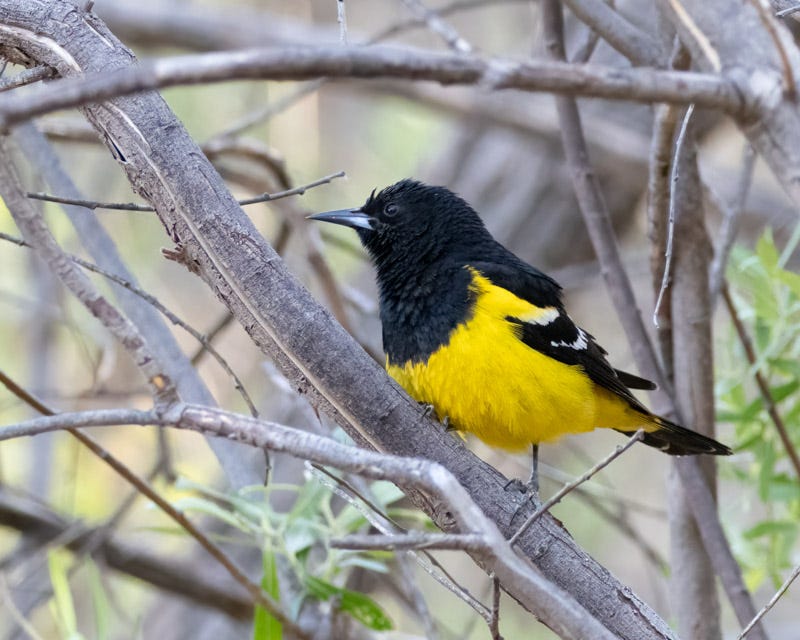

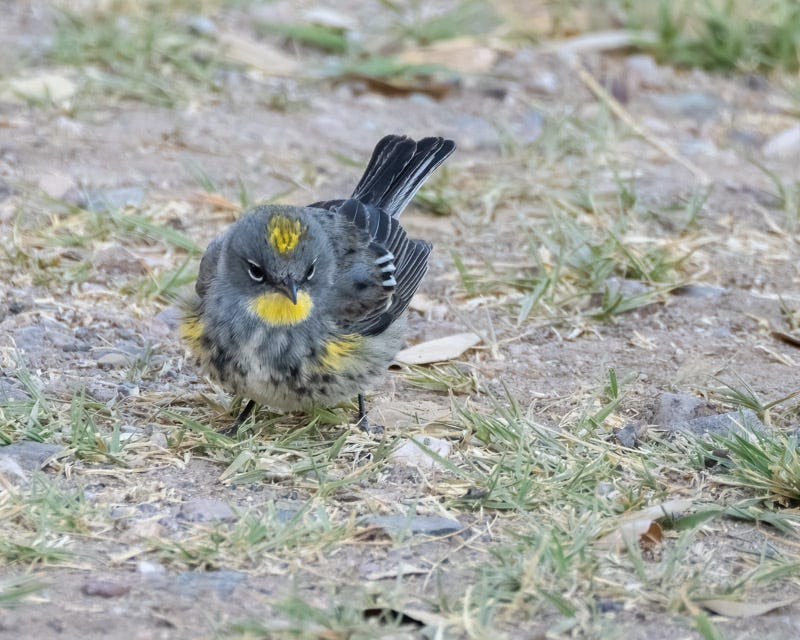
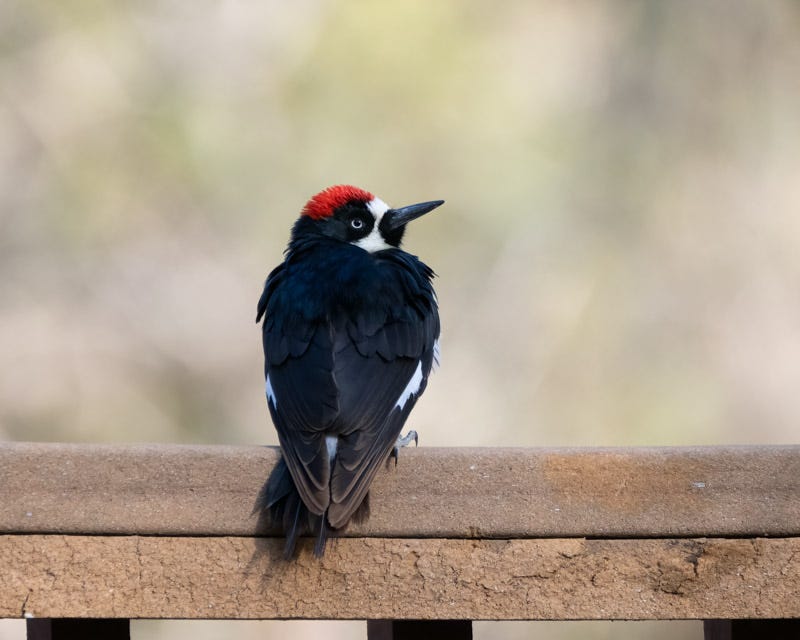

Very nice photos and always informative- thanks Dan!
I think Walter Lanz made a good choice in marrying